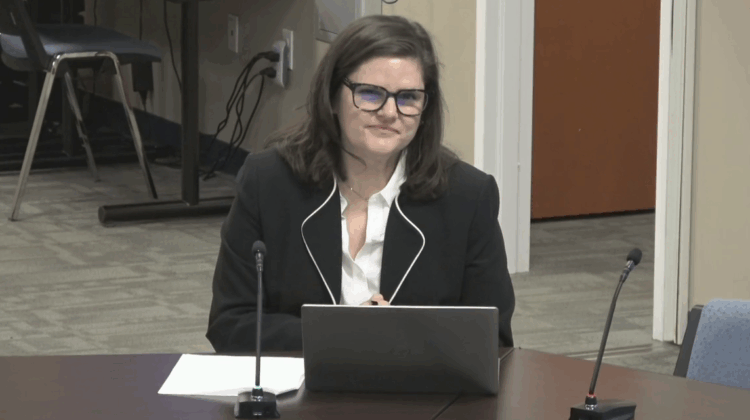The new Director of Student Services, Jenniffer O’Connell, gave her entry plan presentation to the School Committee on Nov. 17 after four months of data gathering. She focused on her process of interviews with key stakeholders as she transitioned into the role. She also spoke of her goal for data-driven leadership that is transparent while respecting student privacy.
The entry plan presentation is a standard practiced “years ago,” according to Superintendent Tom Geary, whenever a new administrator would join the district: “(The new administrator) would go through the process of putting a plan together to ensure a successful entry into the district and then report out on it publicly… We got away from doing that for a few years, but I think its an important practice to bring back, to not only ensure the right steps from the start for the administrator, but also to show the district and the community the path the administrator has taken to immerse themselves in the district.”
O’Connell conducted interviews with groups of stakeholders in the central office, the school principals, school staff, and of parents/members of SEPAC (the Special Education Parent Advisory Council). She asked each group a separate set of questions, but according to her presentation, a request for suggestions was common among all groups, and one frequent suggestion was for visibility. O’Connell said, “Visibility was something that I’ve been doing” that “seems to be well received so far.”
In a similar vein, improved communication was also frequently requested. O’Connell said, “I think for a period of time, people — both staff and parents — felt like things weren’t always clear.” She listed clear communication as one of her priorities as she continues moving into this role.
In her presentation, O’Connell also listed a need for clear “program descriptions/guidelines,” referring to special education programs. O’Connell said she especially heard requests for more clear “entry and exit criteria” but said, “I prefer the term ‘guidelines’ as I think that is better suited for what it is.”
As reported previously, 28.4% of the LPS student population is recognized as having “High Needs,” according to assistant superintendent Adam Federico. O’Connell recognized the need for more clarity in guidelines that can inform the student’s team to make placement decisions, rather than “hard and fast criteria.”
In pursuit of her goal for more data-driven decision-making, O’Connell sent out a survey to parents but only received 16 responses. Over half of those responses listed communication as an area they felt could be improved upon.
Committee member Kim Baker Donahue said, “I think communication is really important for the whole community, and thats what people are craving. The more information you can provide, the less people will have to ask. All of this seems consistent with that, so I really appreciate that.”
Committee member Jamie Hayman went on to ask the community to have patience with O’Connell, “not because (she) can’t do the job, but because (she) has stepped into a situation where, through a series of very sad and unfortunate circumstances, we have not had leadership in this department for at least two years.” He further said, “Everything that you’re describing here, in terms of what you’re hearing, it tracks to a program that hasn’t had that high level of leadership (for a long time).”
O’Connell listed her “low hanging fruit” goals as improving compliance and sticking with procedure. She said, “I am a firm believer that if we follow process… the outcomes will be student driven. You’re taking out that guesswork because the process is going to be the same for every student.”



